
Trentino-Alto Adige: The Alpine Gem of Italy
Explore Trentino-Alto Adige: A stunning blend of Italian and Austrian cultures, offering breathtaking landscapes, world-class outdoor activities, and rich historical charm.
Nestled in the heart of the Italian Alps, Trentino-Alto Adige is a region that offers breathtaking natural beauty and a rich cultural tapestry. This northern Italian gem is renowned for its stunning mountains, pristine lakes, and charming villages. Whether you're an outdoor enthusiast or a history buff, Trentino-Alto Adige has something to offer for everyone. The Dolomites, a UNESCO World Heritage Site, are the crown jewel of this region, offering some of the best hiking, skiing, and climbing opportunities in the world. In the winter, the region transforms into a snowy wonderland, attracting skiers and snowboarders to its world-class resorts. In the summer, the lush green valleys and crystal-clear lakes provide a perfect setting for hiking, cycling, and water sports. Trentino-Alto Adige is also rich in history and culture. The region's unique blend of Italian and Austrian influences is evident in its architecture, cuisine, and festivals. Visit the charming city of Bolzano, where you can explore medieval castles, Gothic cathedrals, and vibrant markets. Don't miss the South Tyrol Museum of Archaeology, home to the famous Ötzi the Iceman. The region is also known for its excellent wines, particularly the crisp white wines of Trentino and the robust reds of Alto Adige. Food lovers will delight in the culinary offerings of Trentino-Alto Adige. From hearty Tyrolean dishes to delicate Italian pastries, the region's cuisine reflects its diverse cultural heritage. Be sure to try local specialties such as speck (smoked ham), canederli (bread dumplings), and strudel (apple pastry). Pair your meal with a glass of locally produced wine for the perfect dining experience.
Local tips in Trentino-Alto Adige
- Visit in late spring or early autumn to avoid the crowded tourist season and enjoy milder weather.
- If skiing, book your accommodation and lift passes well in advance, especially during peak season.
- Rent a car to explore the region at your own pace and reach remote areas not accessible by public transport.
- Learn a few basic phrases in both Italian and German, as both languages are spoken in the region.
- Taste the local wines and visit the vineyards; many offer tours and tastings.
- Check local festival dates; Trentino-Alto Adige is known for its vibrant cultural events and fairs.
Trentino-Alto Adige: The Alpine Gem of Italy
Nestled in the heart of the Italian Alps, Trentino-Alto Adige is a region that offers breathtaking natural beauty and a rich cultural tapestry. This northern Italian gem is renowned for its stunning mountains, pristine lakes, and charming villages. Whether you're an outdoor enthusiast or a history buff, Trentino-Alto Adige has something to offer for everyone. The Dolomites, a UNESCO World Heritage Site, are the crown jewel of this region, offering some of the best hiking, skiing, and climbing opportunities in the world. In the winter, the region transforms into a snowy wonderland, attracting skiers and snowboarders to its world-class resorts. In the summer, the lush green valleys and crystal-clear lakes provide a perfect setting for hiking, cycling, and water sports. Trentino-Alto Adige is also rich in history and culture. The region's unique blend of Italian and Austrian influences is evident in its architecture, cuisine, and festivals. Visit the charming city of Bolzano, where you can explore medieval castles, Gothic cathedrals, and vibrant markets. Don't miss the South Tyrol Museum of Archaeology, home to the famous Ötzi the Iceman. The region is also known for its excellent wines, particularly the crisp white wines of Trentino and the robust reds of Alto Adige. Food lovers will delight in the culinary offerings of Trentino-Alto Adige. From hearty Tyrolean dishes to delicate Italian pastries, the region's cuisine reflects its diverse cultural heritage. Be sure to try local specialties such as speck (smoked ham), canederli (bread dumplings), and strudel (apple pastry). Pair your meal with a glass of locally produced wine for the perfect dining experience.
When is the best time to go to Trentino-Alto Adige?
Iconic landmarks you can’t miss
Buonconsiglio Castle Museum
Explore the rich history and artistic treasures of Buonconsiglio Castle Museum, a must-see destination in Trento, Italy.

Piazza del Duomo di Trento
Explore the captivating Piazza del Duomo di Trento, where stunning architecture meets vibrant local culture in the heart of this enchanting Italian city.

Castel Thun
Explore Castel Thun, a stunning castle in Trentino, Italy, blending rich history with art, offering breathtaking views and unforgettable experiences.
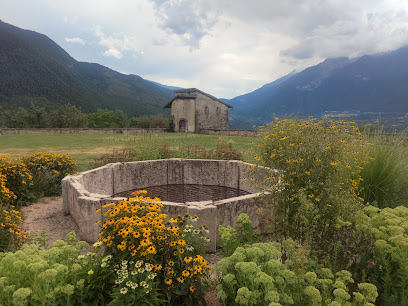
Terrazza delle Dolomiti
Discover the stunning beauty of the Dolomites at Terrazza delle Dolomiti, a picturesque mountain cable car experience in Italy.

Trento Cathedral
Discover the stunning Trento Cathedral, a masterpiece of Gothic architecture and cultural heritage nestled in the heart of Trento, Italy.

Castel Beseno
Discover the majestic Castel Beseno: a historic castle in Trentino offering breathtaking views, rich history, and captivating museum exhibits.
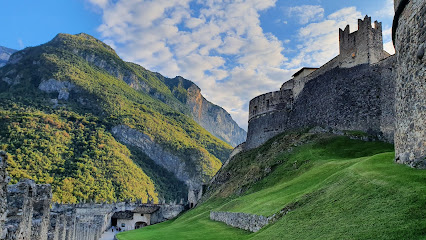
Cima Paganella
Discover the breathtaking beauty and exhilarating adventures at Cima Paganella, a must-visit alpine destination in Italy.

Orrido di Ponte Alto
Explore the breathtaking Orrido di Ponte Alto, a stunning canyon in Trento, Italy, where nature's beauty meets rich geological history.

Mendel Pass
Explore the stunning Mendel Pass in the Brenta Dolomites, where history meets breathtaking natural beauty in northern Italy.

Victory Monument
Explore the Victory Monument in Bolzano, a magnificent historical landmark celebrating Italy's unification, surrounded by scenic views and local culture.

Parco Naturale del Doss Trento
Experience the stunning landscapes and rich history at Parco Naturale del Doss Trento, a serene park perfect for outdoor enthusiasts and history buffs alike.

The Piedicastello Tunnel
Discover the rich history and stunning architecture of the Piedicastello Tunnel in Trento, a must-visit for culture and history enthusiasts.

Monument of Dante
Discover the Monument of Dante in Trento, a captivating historical landmark celebrating Italy's literary heritage in a vibrant square full of life.

Torre Vanga
Explore Torre Vanga, a medieval tower in Trento, Italy, rich in history and offering panoramic views of the stunning alpine landscape.

Torre Civica
Explore the breathtaking Torre Civica in Trento, a historical landmark offering stunning views and rich cultural experiences, perfect for every traveler.
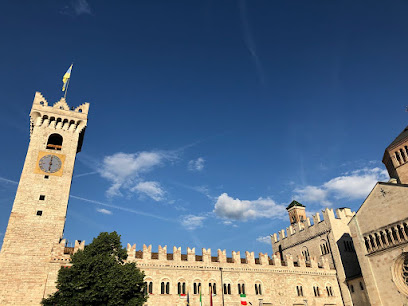
Unmissable attractions to see
MUSE
Explore the wonders of science and nature at MUSE, a stunning museum in Trento, Italy, perfect for families and curious travelers alike.
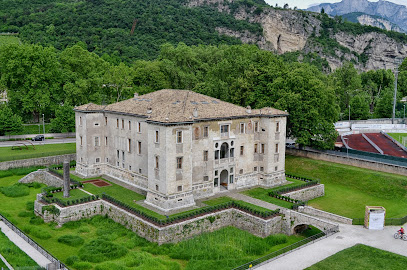
Giardini Trauttmansdorff
Discover the breathtaking Giardini Trauttmansdorff in Merano, a stunning botanical garden showcasing diverse plant species and scenic vistas.

Buonconsiglio Castle Museum
Explore the rich history and stunning art collections at Buonconsiglio Castle Museum in Trento, a must-visit destination for culture enthusiasts.

Piazza del Duomo di Trento
Explore the enchanting Piazza del Duomo di Trento, where history, architecture, and vibrant culture come together in the heart of Trento.

Castel Thun
Experience the historical marvel of Castel Thun, a stunning castle and art museum nestled in the scenic Trentino region of Italy.

Trento Cathedral
Explore the architectural marvel of Trento Cathedral, a stunning blend of Romanesque and Gothic styles in the heart of Trento's vibrant Piazza del Duomo.

Castel Beseno
Experience the grandeur of Castel Beseno, a historic castle and museum in Trento, offering breathtaking views and rich cultural heritage.

Canyon Rio Sass
Explore the breathtaking beauty of Canyon Rio Sass, a natural wonder in Trentino renowned for its stunning rock formations and serene landscapes.

Lago Smeraldo
Discover the breathtaking beauty of Lago Smeraldo in Trentino, a serene escape with crystal-clear waters and stunning alpine views.
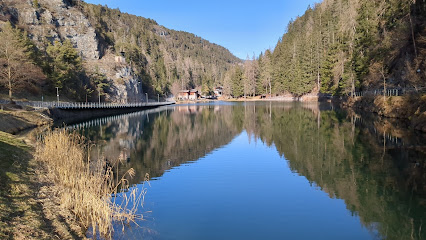
Duomo di Bolzano
Explore the Duomo di Bolzano, a stunning Gothic cathedral that showcases the rich history and culture of South Tyrol, Italy.

Brixner Dom
Explore the stunning Brixner Dom, a masterpiece of Gothic and Baroque architecture in the heart of Brixen, South Tyrol, rich in history and beauty.

Messner Mountain Museum Firmian
Experience the profound connection between humanity and the mountains at the Messner Mountain Museum Firmian in stunning South Tyrol.

Orrido di Ponte Alto
Discover the stunning natural beauty of Orrido di Ponte Alto, a hidden gem in Trentino, Italy, featuring breathtaking gorges and picturesque waterfalls.

Raffeiner Theme Park
Experience the thrill of rides and the beauty of nature at Raffeiner Theme Park, a family-friendly attraction in South Tyrol.

Ortisei - Val Gardena
Explore Ortisei - Val Gardena, a breathtaking alpine paradise offering endless hiking trails, rich culture, and stunning views in the heart of the Dolomites.

Essential places to dine
Forsterbräu Trento
Discover Forsterbräu Trento - where authentic Italian cuisine meets exceptional craft beers in a charming atmosphere.

Green Tower
Experience authentic Italian cuisine at Green Tower in Trento – home of delicious pizzas and warm hospitality.

Ristorante Antica Trattoria Due Mori
Experience authentic Italian flavors at Ristorante Antica Trattoria Due Mori in Trento - where every meal is a celebration of tradition.
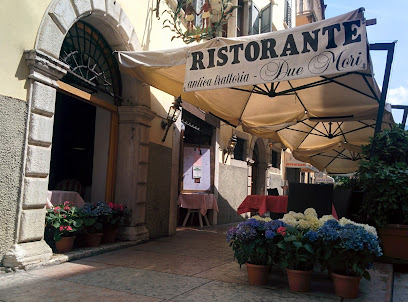
Ristorante La Casina
Discover authentic Italian flavors at Ristorante La Casina in Drena - where every meal is a celebration of fresh ingredients and culinary tradition.

ristorante la cantinota
Experience authentic Italian cuisine amidst a charming garden at Ristorante La Cantinota in Trento—where culinary delights meet vibrant nightlife.

Trattoria Piedicastello
Experience authentic Italian flavors at Trattoria Piedicastello in Trento—where tradition meets taste.

Ristorante Villa Madruzzo
Experience authentic Italian cuisine at Ristorante Villa Madruzzo in Cognola—where exquisite flavors meet stunning scenery.

Patelli Restaurant
Experience the heart of Italy at Patelli Restaurant in Trento – where authentic flavors meet warm hospitality.

Ristorante Il Libertino Trento
Experience authentic Italian cuisine at Ristorante Il Libertino in Trento – where every dish tells a story.

Al Vò
Discover authentic Italian cuisine at Al Vò in Trento—where every dish tells a story and every meal is an experience.

Scrigno del Duomo
Discover exquisite Italian flavors at Scrigno del Duomo - a culinary treasure in Trento's historic heart.

Antica Trattoria Al Volt
Experience authentic Italian dining at Antica Trattoria Al Volt in Trento - where tradition meets flavor in every dish.

Terramia - Ristorante Mediterraneo
Experience authentic Mediterranean flavors at Terramia in Trento – where fresh seafood meets Italian culinary traditions.

Locanda Margon
Discover exquisite Italian cuisine at Locanda Margon, a fine dining gem nestled in the scenic hills of Trentino.

Osteria Te Ke Voi Trento
Discover authentic Italian flavors at Osteria Te Ke Voi in Trento – where every dish tells a story.

Markets, malls and hidden boutiques
Outlet Center Brenner
Experience the ultimate shopping adventure at Outlet Center Brenner, where high-quality brands meet stunning Alpine scenery.

Centro Commerciale Top Center
Discover the ultimate shopping experience at Centro Commerciale Top Center in Trento, where fashion meets fun in a vibrant atmosphere.

Stadt Centrum
Explore Stadt Centrum in Merano: A premier shopping destination offering a blend of local charm and modern retail experiences.
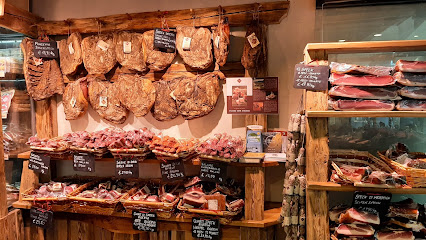
Centro commerciale Bren Center
Experience the best shopping and dining at Bren Center in Trento, a vibrant hub for locals and tourists alike.

Il Maso Dello Speck
Experience the authentic flavors of Italy at Il Maso Dello Speck, Trento's premier destination for gourmet Italian groceries and delicacies.

Piazza Italia
Discover the fashion-forward Piazza Italia, a vibrant clothing store in Bolzano, offering stylish apparel for the whole family in a charming alpine atmosphere.

CASA
Explore CASA in Bolzano for exceptional gifts, stylish furniture, and unique kitchen supplies that beautifully capture South Tyrolean charm.

Fashion Gallery Trento
Explore the exquisite Fashion Gallery Trento, where bridal elegance and contemporary styles meet in a stunning shopping experience.

THUN Shop
Discover unique Italian craftsmanship at THUN Shop in Trento, offering a variety of beautiful handcrafted collectibles and gifts.

Alpen Folk
Explore Alpen Folk in Andalo for unique souvenirs, local crafts, and delightful perfumes that encapsulate the essence of the Trentino region.

Senza Fine
Discover the essence of modern Italian fashion at Senza Fine, a chic women's clothing store in the heart of Trento.

La Bottega
Discover exquisite curtains and home decor at La Bottega in Ronzone, where craftsmanship meets elegance in the heart of the Italian Alps.

INTERNO 11
Explore the chic styles of INTERNO 11, Trento's premier women's clothing store, offering unique fashion pieces for every occasion.

glücklich I Eppan
Explore the charming fashion boutique glückliche I Eppan in South Tyrol for unique styles and a personalized shopping experience.

IN-CON-TRO muse Donna
Explore unique Italian fashion at IN-CON-TRO muse Donna in Trento, where style meets elegance in an inviting boutique atmosphere.

Essential bars & hidden hideouts
Officina Gambrinus
Experience the lively ambiance and delicious pizzas at Officina Gambrinus, a vibrant pub in Trento, Italy, perfect for food and nightlife lovers.

Bar Pasi
Discover the charm of Trento at Bar Pasi, a delightful bar and ice cream shop offering local flavors in a vibrant atmosphere.

Locanda del Gatto Gordo
Discover the vibrant flavors of Trento at Locanda del Gatto Gordo, a charming pub-bar offering a perfect blend of local cuisine and warm ambiance.

Bar La Vie En Rose
Experience the cozy charm of Bar La Vie En Rose in Trento, where delightful drinks and a warm atmosphere await every traveler.

TJ Bar
Experience the vibrant atmosphere of TJ Bar in Trento, where delicious drinks and good company await you.

La Bookique
Experience the vibrant atmosphere of La Bookique, a beloved bar and live music venue in Trento, perfect for relaxing and enjoying local talent.

L’Angolo dei 33
Experience Trento's vibrant nightlife at L’Angolo dei 33, a cozy pub offering local brews and a warm atmosphere in the heart of the city.
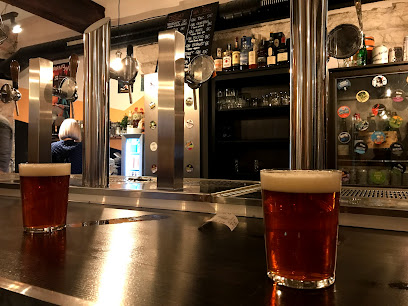
Il Simposio Bar Ristorante
Experience the best of Italian cuisine in Trento at Il Simposio Bar Ristorante, where delightful dishes meet a welcoming gastropub atmosphere.

La Bella Vita
Experience authentic Italian hospitality at La Bella Vita, Trento's vibrant bar with a delightful selection of beverages and snacks.

Bar Al Porteghet
Experience the charm of Trento at Bar Al Porteghet, a cozy bar and café serving local delights in a welcoming atmosphere.

Accademia del Gin di Linda
Experience the finest selection of gins and cocktails in Trento at the inviting Accademia del Gin di Linda, where comfort meets creativity.

Snack Bar The social Stone
Experience Trento's finest at Snack Bar The Social Stone, where gourmet snacks, exquisite wines, and unforgettable events come together.

Flambard Pub
Experience the heart of Trento's nightlife at Flambard Pub, where local culture meets a cozy atmosphere and delightful drinks.

dasQ
Discover the vibrant cocktail scene at dasQ in Trento, where expertly crafted drinks meet a lively atmosphere for an unforgettable night out.

Bar Nuovo Paradiso
Experience the essence of Trento at Bar Nuovo Paradiso, where cozy ambiance meets delightful drinks in a historic Italian setting.
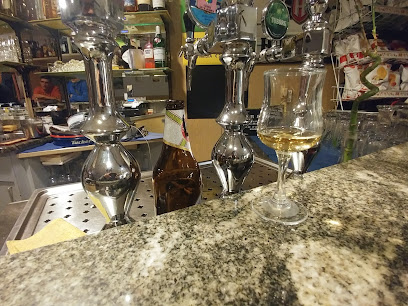
Local Phrases about Trentino-Alto Adige
-
- HelloCiao
[chow] - GoodbyeArrivederci
[ah-ree-veh-der-chee] - YesSì
[see] - NoNo
[noh] - Please/You're welcomePer favore/Prego
[pair fah-voh-reh/preh-goh] - Thank youGrazie
[grah-tsyeh] - Excuse me/SorryScusami/Scusa
[skoo-sah-mee/skoo-sah] - How are you?Come stai?
[koh-meh stai] - Fine. And you?Bene. E tu?
[beh-neh. eh too] - Do you speak English?Parli inglese?
[pahr-lee een-gleh-zeh] - I don't understandNon capisco
[non kah-pee-skoh]
- HelloCiao
-
- I'd like to see the menu, pleaseVorrei vedere il menù, per favore
[vohr-ray veh-deh-reh eel meh-noo, pair fah-voh-reh] - I don't eat meatNon mangio carne
[non mahn-joh kahr-neh] - Cheers!Salute!
[sah-loo-teh] - I would like to pay, pleaseVorrei pagare, per favore
[vohr-ray pah-gah-reh, pair fah-voh-reh]
- I'd like to see the menu, pleaseVorrei vedere il menù, per favore
-
- Help!Aiuto!
[ah-yoo-toh] - Go away!Vai via!
[vah-ee vee-ah] - Call the Police!Chiama la polizia!
[kee-ah-mah lah poh-lee-tsyah] - Call a doctor!Chiama un dottore!
[kee-ah-mah oon doh-toh-reh] - I'm lostMi sono perso
[mee soh-no pehr-soh] - I'm illSto male
[stoh mah-leh]
- Help!Aiuto!
-
- I'd like to buy...Vorrei comprare...
[vohr-ray kohm-prah-reh] - I'm just lookingSto solo guardando
[stoh soh-loh gwar-dahn-doh] - How much is it?Quanto costa?
[kwahn-toh koh-stah] - That's too expensiveÈ troppo caro
[eh troh-poh kah-roh] - Can you lower the price?Puoi abbassare il prezzo?
[pwah-ee ahb-bahs-sah-reh eel preht-soh]
- I'd like to buy...Vorrei comprare...
-
- What time is it?Che ora è?
[keh oh-rah eh] - It's one o'clockSono l'una
[soh-noh loo-nah] - Half past (10)È mezzogiorno
[eh meh-tsoh-johr-noh] - MorningMattina
[maht-tee-nah] - AfternoonPomeriggio
[poh-meh-ree-joh] - EveningSera
[seh-rah] - YesterdayIeri
[yeh-ree] - TodayOggi
[oh-jee] - TomorrowDomani
[doh-mah-nee] - 1Uno
[oo-noh] - 2Due
[doo-eh] - 3Tre
[treh] - 4Quattro
[kwah-troh] - 5Cinque
[cheen-kweh] - 6Sei
[seh-ee] - 7Sette
[seht-teh] - 8Otto
[oht-toh] - 9Nove
[noh-veh] - 10Dieci
[dee-eh-chee]
- What time is it?Che ora è?
-
- Where's a/the...?Dove si trova un/il...
[doh-veh see troh-vah oon/eel] - What's the address?Qual è l'indirizzo?
[kwahl eh leen-dee-ree-tsoh] - Can you show me (on the map)?Puoi mostrarmi (sulla mappa)?
[pwah-ee mohs-trahr-mee (sool-lah mahp-pah)] - When's the next (bus)?Quando passa il prossimo (autobus)?
[kwahn-doh pahs-sah eel prohs-see-moh (ow-toh-boos)] - A ticket (to ....)Un biglietto (per ....)
[oon beel-lyet-toh (pair)]
- Where's a/the...?Dove si trova un/il...
History of Trentino-Alto Adige
-
Trentino-Alto Adige has a rich history that dates back to prehistoric times, with archaeological evidence of human settlements as early as the Paleolithic era. The region was later inhabited by the Raeti, a group of ancient Alpine tribes. During the Roman era, it became an important strategic area, integrating into the Roman Empire around the 1st century BC. The Romans established several settlements, including the city of Tridentum, known today as Trento, which became a crucial hub for trade and military activities.
-
Following the fall of the Roman Empire, Trentino-Alto Adige experienced a series of invasions and power struggles. By the 11th century, the region had become part of the Holy Roman Empire. The Prince-Bishopric of Trento was established, granting secular and ecclesiastical authority to the bishops of Trento. This period saw the construction of significant religious and defensive structures, including the Trento Cathedral and numerous castles that dot the landscape today.
-
In the 14th century, Trentino-Alto Adige came under the control of the House of Habsburg, which significantly influenced the region's cultural and political landscape. The Habsburg dynasty ruled the area for several centuries, incorporating it into the Austro-Hungarian Empire. This era introduced Austrian architectural styles, customs, and a robust administrative system. The region's dual linguistic and cultural heritage began to take shape during this period, with both Italian and German influences becoming prominent.
-
Trentino-Alto Adige played a crucial role during World War I, serving as a battleground between the Austro-Hungarian and Italian forces. The region's mountainous terrain saw fierce combat, including the infamous Battle of Caporetto. Following the war, the Treaty of Saint-Germain in 1919 resulted in the annexation of Trentino-Alto Adige by Italy. This period marked significant political and social changes, as the region transitioned from Austro-Hungarian to Italian governance.
-
During the Fascist regime under Benito Mussolini, Trentino-Alto Adige underwent a rigorous process of Italianization. The government implemented policies aimed at suppressing the German-speaking population and promoting Italian language and culture. German place names were Italianized, and German-speaking schools were closed. This period was marked by tension and resistance from the local population, which had profound effects on the region's cultural identity.
-
After World War II, Trentino-Alto Adige faced renewed calls for autonomy. The 1946 De Gasperi-Gruber Agreement between Italy and Austria laid the groundwork for greater self-governance. In 1972, a new autonomy statute was enacted, providing the region with significant legislative and administrative powers. This autonomy has allowed Trentino-Alto Adige to preserve its unique cultural heritage and foster economic development, making it one of the most prosperous regions in Italy.
-
Today, Trentino-Alto Adige is celebrated for its rich cultural tapestry, blending Italian and Germanic traditions. The region's commitment to preserving its history is evident in its well-maintained castles, churches, and museums. Festivals such as the Trento Film Festival and the Südtirol Jazz Festival Alto Adige highlight the area's vibrant cultural scene. Moreover, the region's culinary offerings, including hearty Alpine dishes and fine wines from local vineyards, reflect its diverse heritage. This unique blend of history and culture makes Trentino-Alto Adige a captivating destination for travelers.
Trentino-Alto Adige Essentials
-
Trentino-Alto Adige is located in northern Italy and is accessible by multiple means of transport. The nearest international airports are Verona Villafranca Airport (VRN) and Innsbruck Airport (INN) in Austria, both offering convenient access to the region. From these airports, you can rent a car, take a shuttle service, or use public transport to reach Trentino-Alto Adige. Train travel is also an excellent option with the region being well-connected by Italy's high-speed rail network. Major cities like Trento, Bolzano, and Merano are easily reachable by train from cities such as Milan, Venice, and Verona.
-
Trentino-Alto Adige boasts an efficient and comprehensive transportation system. Public transport options include trains, buses, and cable cars. The region's train network is well-developed, connecting major towns and cities. Buses serve more remote areas and smaller villages. Renting a car is a popular choice for those who wish to explore at their own pace. Additionally, many towns and cities have bike rentals and well-maintained cycling paths, ideal for exploring the scenic landscapes.
-
The official currency in Italy is the Euro (EUR). Credit and debit cards are widely accepted in hotels, restaurants, and shops across Trentino-Alto Adige. However, it is advisable to carry some cash, particularly in smaller towns and rural areas where card acceptance may be limited. ATMs are readily available in most towns and cities, allowing you to withdraw cash as needed.
-
Trentino-Alto Adige is generally a safe region for tourists. Violent crime is rare, but like any travel destination, it is important to remain vigilant. Petty crimes such as pickpocketing can occur in crowded areas and on public transport. It is advisable to keep your belongings secure and be cautious when withdrawing cash from ATMs. There are no specific high-crime areas targeting tourists, but standard precautions should always be taken.
-
In case of emergency, dial 112, the European emergency number, for immediate assistance. The region has well-equipped medical facilities and hospitals in major towns and cities. Pharmacies are common and can provide over-the-counter medications for minor health issues. It is advisable to have travel insurance that covers medical emergencies. For any legal issues or assistance, contacting your country's consulate or embassy is recommended.
-
Fashion: Do dress smartly and comfortably. Avoid overly casual attire when dining in upscale restaurants or visiting cultural sites. Religion: Do respect local customs, especially when visiting churches and religious sites. Dressing modestly is recommended. Public Transport: Do validate your ticket before boarding trains and buses. Don't talk loudly or disturb other passengers. Greetings: Do greet people with a friendly 'Buongiorno' (Good morning) or 'Buonasera' (Good evening). A handshake is common. Eating & Drinking: Do try local specialties and wines. Don't rush through meals; dining is a leisurely experience in Italy.
-
To experience Trentino-Alto Adige like a local, take part in traditional festivals and events, such as the Christmas markets in Bolzano and Merano. Visit local wineries and sample the region's renowned wines. Explore the Dolomites, a UNESCO World Heritage site, through hiking or skiing, depending on the season. Engage with locals, as they are often friendly and eager to share insights about their culture and traditions. Don't miss trying local dishes such as 'Speck' (smoked ham) and 'Canederli' (dumplings).
Trending Landmarks in Trentino-Alto Adige
Nearby Cities to Trentino-Alto Adige
-
Things To Do in St. Moritz
-
Things To Do in St. Anton am Arlberg
-
Things To Do in Davos
-
Things To Do in Verona
-
Things To Do in Arosa
-
Things To Do in Venice
-
Things To Do in Bergamo
-
Things To Do in Balzers
-
Things To Do in Triesenberg
-
Things To Do in Kitzbühel
-
Things To Do in Vaduz
-
Things To Do in Schaan
-
Things To Do in Mauren
-
Things To Do in Eschen
-
Things To Do in Schellenberg












